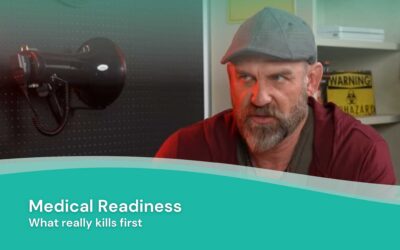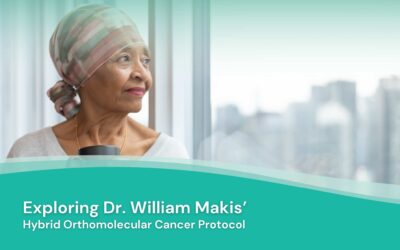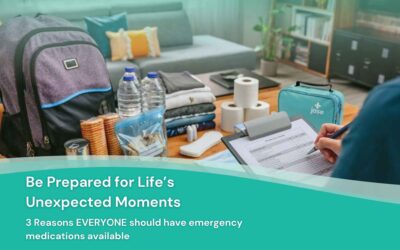Scroll down to watch the fentanyl documentary, a must watch video
A few weeks ago, I wrote about the epidemic of rainbow fentanyl that has hit the market and how dangerous this drug is. When properly used, such in end-of-life care, this prescription opioid drug can provide relief where other pain relievers aren’t effective. As a former home health and hospice nurse I would teach caregivers how to apply the medication loaded patch behind the ear, taking care to for the caregiver to not touch the inside of the patch. Back then, we were aware of how potent this medication was, and it was prescribed in only the most severe cases of pain.
Fast forward to now and this medication is now one of the worlds most dangerous street drugs. According to a press release from the DEA:
“Fentanyl is the single deadliest drug threat our nation has ever encountered,” said Administrator Anne Milgram. “Fentanyl is everywhere. From large metropolitan areas to rural America, no community is safe from this poison. We must take every opportunity to spread the word to prevent fentanyl-related overdose death and poisonings from claiming scores of American lives every day.”
I wish I had better news to report, but I am starting to believe we are only seeing the tip of the iceberg. In just the past weeks:
This is such heartbreaking news, so many lives lost, so many families and loved ones torn apart from this drug.
Action plan:
In order to protect you and your loved ones from this onslaught of fentanyl that has reached every state and community in the US there are a few tips provided by the DEA on their website:
- Those who encounter fentanyl are advised not to handle it directly and call 911.
- The DEA has launched a fentanyl awareness page
- National fentanyl awareness day was August 21, 2022 On this site are educational and tips to help identify and keep you and your family safe from fentanyl
- Must watch video, Dead on Arrival, a documentary on the fentanyl crisis,
- An educational website on illicit drugs, org
- Dealers use social media to push their drugs. Be aware of this.
- You can purchase Naloxone at any pharmacy that can reverse the effects of fentanyl and other narcotics, such as morphine. Please be proactive and have some on hand if there is any chance anyone you know may engage in illicit drug use.
Recent Posts
Keeping you informed and safe.
Our mission is to help you be more medically prepared.
Stay up-to-date on the latest news in health and preparedness.
When Disaster Strikes, It’s Not Hunger or Thirst That Takes the First Lives In every disaster zone, from hurricanes in the Caribbean to war zones in Ukraine, the pattern is the same. People worry about food and water, but it’s infection that kills first. A small wound...
Exploring Dr. William Makis’ Hybrid Orthomolecular Cancer Protocol: Focus on Ivermectin and Mebendazole/Fenbendazole *Disclaimer: This article is for educational purposes and does not constitute medical advice. Always seek professional guidance.* In the evolving...
3 Reasons EVERYONE should have emergency medications avaiable. It's all about access—access to medications and care when you need it most. And when things happen outside of your control that access can disappear.Below are 3 examples of how easily this access can be...
Educating and preparing your children ahead of time means fewer surprises in the event of an emergency.Growing Up Prepared: Empowering Youth in Disaster Preparedness As we observe National Preparedness Month, it's crucial to remember that disasters can strike at any...
(And what to do about it)

Summer is in full swing, and with it many are outside, enjoying outdoor activities and fun in the sun. While the benefits of being outdoors can not be underestimated, sun exposure when using many prescriptions and nonprescription medicines can result in sensitivity and skin damage.
Below is a list taken from the FDA of drugs that can cause skin sensitivity and skin damage when exposed in the sun.
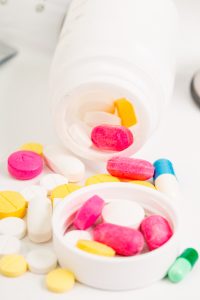
According to the FDA:
- Antibiotics -ciprofloxacin, doxycycline, levofloxacin, ofloxacin, tetracycline, trimethoprim)
- Antifungals -flucytosine (Ancobon) , griseofulvin (Gris Peg) , voricanozole (Vfend)
- Antihistamines -cetirizine (Zyrtec, Zyrtec Allergy, Children’s Zyrtec Allergy, Children’s Zyrtec Hives Relief, PediaCare Children’s 24-Hour Allergy, Aller-Tec, and Wal-Zyr), diphenhydramine (Benadryl, Genahist, Sominex, Unisom), loratadine (Claritin), promethazine (Phenergan), cyproheptadine (Periactin)
- Cholesterol lowering drugs -simvastatin (Zocor), atorvastatin (Lipitor), lovastatin (Altoprev), pravastatin (Pravachol)
- Diuretics- thiazide diuretics: hydrochlorothiazide Microzide, HydroDiuril, and Oretic), chlorthalidone, chlorothiazide.; other diuretics: furosemide and triamterene)
- Non-steroidal anti-inflammatory drugs -ibuprofen (Advil), naproxen(Aleve), celecoxib (Celebrex), piroxicam (Feldene), ketoprofen (Actron)
- Oral contraceptives and estrogens
- Phenothiazines -tranquilizers, anti-emetics: examples, chlorpromazine (Thorazine and Largactil) promethazine, thioridazine (Mellaril Topper), prochloroperazine (Stemetil, Buccastem)
- Retinoids (acitretin, isotretinoin)
- Sulfonamides – sulfadiazine, sulfamethizole (brand name: Thiosulfil Forte), sulfamethoxazole (Gantanol), sulfasalazine (Azulfidine), sulfisoxazole (Gantrisin)
- Sulfonylureas for type 2 diabetes- Glimepiride (Amaryl) Glyburide (DiaBeta; Micronase) Glipizide (Glucotrol)
- Alpha-hydroxy acids in cosmetics
Below are some tips to enjoy the great outdoors while on any of the above medications:
Avoid Sun exposure
When outside, seek shade, especially between 10 a.m. and 2 p.m. – some organizations recommend as late as 4:00 p.m. Keep in mind that the sun’s rays may be stronger when reflected off water, sand and snow.
Wear long-sleeved shirts, pants, sunglasses, and broad-brimmed hats to limit sun exposure.
Use a broad sunscreen regularly and as directed. Broad-spectrum sunscreens provide protection against ultraviolet A (UVA) and ultraviolet B (UVB) radiation. An SPF 15 is the minimum number needed to provide measurable protection; however, a sunscreen with an SPF value of 30 or higher is recommended. Rarely, some sunscreen ingredients can cause photosensitivity themselves.
A Word About Sunscreens
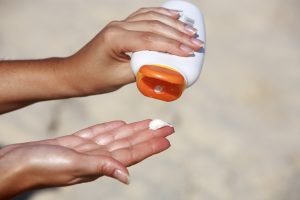
Environmental Working Group (EWG) founded in 1990, is a 501C3 nonprofit that specializes in research and advocacy in the areas of agricultural subsidies, toxic chemicals, drinking water pollutants, and corporate accountability. They publish reports on various consumer products such as detergents, cosmetics, food and water safety, etc. They have published their 2022 sunscreen ingredient and testing list that tests sunscreen effectiveness and ingredient safety.
Their peer reviewed study, completed in Fall of 2021 of 51 sunscreens tested showed that many of these sunscreens did not protect as well as claimed. UVA radiation is found to cause skin cancer. SPF is the standard by which sunscreens make their claim that they provide protection against suns rays, however SPF only measures a small portion of the UV light spectrum. This is different than testing against the entire UV light spectrum.
In other words, SPF does not mean that you are protected against UVA cancer causing rays.
How to select an effective sunscreen
Look for a sunscreen that
- States it is a broad-spectrum sunscreen
- Has a SPF of 30 or greater
- Is water resistant or waterproof
EWG has published an up-to-date sunscreen lists for everyday use, safe for infants and children, sport and water activities and more. Check them out before purchasing new sunscreen.
By the way, you should always throw out and purchase new sunscreen every year. Environmental Working Group approved sunscreens
If you have questions about your medications and the possibility of a photosensitivity, contact your health-care professional or pharmacists. Taking a few precautions can help limit your risk of photosensitivity and keep the sun shining on your fun.
There is much concern, and rightfully so about the use and overuse of antibiotics. Antibiotics can be lifesaving when used in a prudent and appropriate manner. Overuse is still a concern and one that shouldn’t be taken lightly.
Black box warnings on one class of antibiotics

What is a black box warning?
Black box warnings are required by the U.S. Food and Drug Administration for certain medications that carry serious safety risks. Often these warnings communicate potential rare but dangerous side effects, or they may be used to communicate important instructions for safe use of the drug, in 2008 the FDA issued a black box warning for fluoroquinolones (FQ).
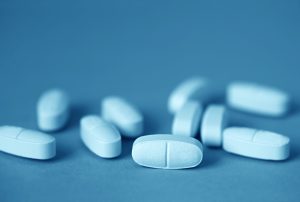
Fluoroquinolones carry black box warning
One class of antibiotics, the fluoroquinolones (FQ) (ciprofloxacin, levofloxacin, moxifloxacin, and others) have been associated with increased tendon ruptures. A tendon rupture is a partial or complete tear of a tendon. Tendons are tough bands of tissue that attach muscles to your bones. An example of a tendon is the Achilles tendon, which attach the heel bone to the calf muscles.
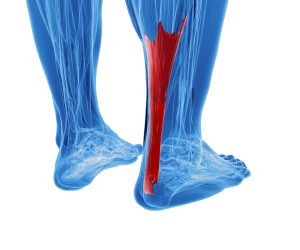
Fluoroquinolones (FQ) are among the most widely prescribed antibiotics in the outpatient setting, due to their broad-spectrum treatment of bacteria found in respiratory, urinary, joint, and skin infections.
A large study reviewing retroactive patient records was conducted between 2007 and 2016 with over a million subjects from the senior population age 65 and older. This study reviewed the use of FQ against other antibiotics and even similar drugs in the FQ class to assess tendon rupture occurrence. Only one of the FQ antibiotics displayed a significant tendency to tendon rupture- between a 16% (rotator cuff) and fourfold risk (Achilles tendon). That antibiotic was levofloxacin. Neither ciprofloxacin-one of the antibiotics found in the Jase case- or moxifloxacin- which were part of the study- was found to increase tendon rupture.
Known risk factors for tendon ruptures
Risk factors associated with FQ-induced tendon disorders include age greater than 60 years, corticosteroid therapy, renal failure, diabetes mellitus, and a history of musculoskeletal disorders.
In addition, taking oral steroids increased the risk by 46-fold, and patients greater than 60 years of age who were recently treated with a FQ for 1 to 30 days were at a 1.5-fold and a 2.7-fold greater risk for development of tendon disorders and tendon rupture as compared to patients less than 60 years of age, respectively. Males are twice as likely to be affected as females as much as 2:1.
A study conducted with adolescents aged 12-18 from 2000-2018 which focused on the use of FQ and tendon rupture incidence concluded: The excess risk of tendon rupture associated with fluoroquinolone treatment was extremely small, and these events were rare.
Conclusion
There is much controversy and lack of reliable information on the black box warning of fluoroquinolones
From reliable studies there are a few conclusions we can draw:
- Not all fluoroquinolones put patients at risk for tendon ruptures
- Levofloxacin is the one FQ that does exhibit greater risk for tendon ruptures
- Ciprofloxacin and moxifloxacin show no sign for increase in tendon ruptures
- Risk factors for tendon ruptures include over age 60, taking corticosteroids, renal failure, diabetes, and history of musculoskeletal disorders. Males are 2x more likely to suffer tendon ruptures than females.
- Adolescents are rarely at risk for tendon rupture when taking fluoroquinolones.
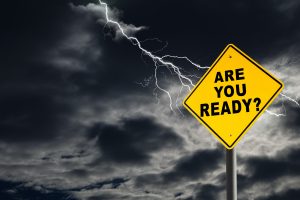
(Or are you still rearranging the deck chairs on the Titanic?)
It is easy- and necessary to shut the world out and enjoy time doing the things you love. Reading a good novel, losing yourself in your favorite craft, spending time with friends and family, going to the lake, etc. Even a good cup of coffee or tea shared at a local favorite hangout with a good friend is healthy and necessary.
However, there are storm clouds forming, and they are almost overhead. Those clouds are promising a deluge of life altering events that we must take heed to if we are to survive the coming storm. We have been warned that the food shortages, diesel, and gas prices skyrocketing (and prices going even high, some predict into the double digits) medication and medical supply shortages are not a short-term problem. We are being promised that these changes are permanent.
Open your umbrella of safety to shield you and your loved one’s storm of changes to our way of life.
We have become complacent. Everything we need or want magically appears on the grocers or department store shelves where all we do is grab a shopping cart and fill. Or in larger cities Instacart and other delivery services bring the merchandise directly to your doorstep.
This way of life is dramatically changing. And this isn’t temporary. Take for instance the neighborhood supermarket. Grocery stores weren’t an everyday convenience until the first Piggly Wiggly opened its doors on September 11, 1916, as the first self-service grocery store. Before that the customer would hand their list to the store clerk and they would fill the order. Many times, home gardens, livestock, barter, and work in exchange for food was the normal way of life. The grocer was used for bulk items such as sugar, flour, fabric, and other items not found locally.
Hopefully by now you have acquired your first aid knowledge, bandages medical supplies and Jase case for the inevitable emergency. Between repeated warnings from our government citing the power grid going down, supply chain shortages medication and medical supply shortages, food shortages, food recalls and more we are warned daily that one or more life threatening crisis is likely., or inevitable.
What if the designated or assumed primary healthcare provider in your family or community person is the one sick or injured? Do you have a plan?
Do you have a plan for limited or nonexistent medical supplies?
Given the press releases and statements from the powers that be these are very real possibilities. We are being told a second pandemic, worse than the Covid 19 pandemic is not just probable, but inevitable.
Are you physically, mentally, emotionally, and spiritually prepared for this? Have you tried to put in place a plan but feel overwhelmed? You are not alone. Fear and feelings of being overwhelmed are perfectly normal. Taking back control of parts of your life that you are able to will put you back in the driver’s seat of your s and your loved one’s destiny.
5 Steps to weather the coming storm of events
The past 2 years and events that have followed- baby formula shortage, medical supplies and pharmaceutical supplies, overall supply chain shortages have taught us one thing- it is necessary to act NOW. According to many sources our supply chain disruption is closing in rapidly and not going away anytime soon.
- Take control of your finances
Take a long, hard look at your monthly expenditures. Which are necessary? Which are wants? Free up some of your finances by taking a hard look at your financial situation. Do you do a daily drive through to your local coffee shop? If so, try setting up and making your favorite drink at home and bring to work. This alone will save hundreds of dollars in some instances. Do you have cable tv? If so, how much does that run a month? Netflix? Sports channels? Do you plan your meals or make trips through the drive through several times a week? How about clubs you no longer attend- the dues, etc. Do you live in an area where you could use your bicycle to run to the grocers?
- Take that extra money and get prepared
With the money you have freed up from streamlining your bills and expenditures look at your food, water, and medical budgets and supplies.
Food and water
Water
There is sufficient water in city water supplies to provide for the promised and already happening rolling blackouts. However, if these blackouts are extended the water will quickly run out and there will be a water shortage crisis. Take time to store water and learn how to safely filter water. I have written about this important topic in the past. One of the most common downfalls of civilizations wasn’t food shortages. It was waterborne illnesses and hygienic practices. There are so many good water filtration devices on the market. Do your research.
Food security
It is important to purchase the highest quality food you are able, however in many instances even with a streamlined budget this isn’t always feasible. Nutrition is the key to a healthy immune system and the ability to bounce back after an illness or injury. Supplementing your diet with fresh greens and sprouts is one of the easiest and healthiest ways to maintain health. The Greenstalk Vertical Planter is a wonderful way to supplement your diet and helps offset the grocery bill. I have a tower garden on our balcony. The number of leafy greens I can produce is astounding. We have been enjoying lettuce, chard, basil, mint and many other herbs and vegies from this garden. It can be grown inside or on a porch, saving space and water. The initial set up was an investment, however it is producing so many greens and other vegies that is quickly paying for itself. There are many types of towers and even tabletop hydroponic systems out there, this is just an example of one.
Microgreens are an amazing and inexpensive way to supplement the diet. These powerhouses Truleaf Market, an online supplier of microgreens and more, carries an amazing array of sprouting seeds. Their quality is unparalleled.
Medical supplies and medications
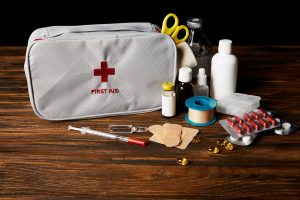
The medication shortage intensifies: Beyond prescription medications survey your medicine cabinet and first aid supplies. Do you have creams for burns, pain, antiseptics? Eye washes? Medicines or herbal preparations for the flu and common cold? Allergy medication? How about an inexpensive dental repair kit?
Make a list of what you and your family use on a regular or emergent basis and stock up now on low inventory.
- Practice, practice, practice
As we enter this new era where life as we know it is changing, our ability to adapt and change will determine our survival.
Practicing scenarios, such as medical emergencies, cooking with stored food, getting a small garden together and using it will help make this transition easier. It will enable you to see where your and your loved one’s weaknesses are now, while we are able to mitigate these challenges. Get the entire family/community involved. Is there a designated leader or natural leader that can coordinate responsibilities? Are there adequate medically trained personnel? Medical supplies? Do people know how and when to use them?
How about age-appropriate jobs and responsibilities for the young and the disabled?
If you don’t know your neighbors, now is a good time to start. Don’t wait for someone to organize a community potluck. Take that first step. Get to know your neighbors and those closest to you geographically. Assess their integrity and skills without being obvious. As you get to know your neighbors engage in topics around preparedness and gage their response. Hopefully you will be able to find like minded people within your neighborhood.
- Assess and form a plan. Then form another one, and another
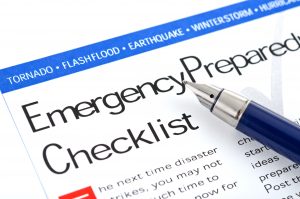
As you rehearse your scenarios- from supply chain disruptions to medical emergencies to lack of clean water- have more than one action plan in place. Write down steps and post on the refrigerator or somewhere easily accessible in an envelope. Pull out these plans and make it a point to practice an area you and your loved ones and community are weak in. Make this a monthly commitment.
- Keep your mental and spiritual health in shape
Without mental and spiritual health and practices that keep one centered and grounded, all the above 4 other points are useless. Make sure if you or your loved one is taking medication for a mental health condition that they have enough stored for several months.
Check in daily with your own mental health and spiritual practice. This is by far the most important aspect to assure survival. Chek in with your loved ones and make sure they are not struggling. If they are, seek help now. Take time to enjoy life, turn off the news, media and people that promote fear and not action. We can and will come out of this stronger and more resilient if we get prepared for the storm that is already upon us.

On June 22, 2022 the World Health Network (WHN) has declared Monkeypox a pandemic. On June 23, 2022, the World Health Organization (WHO) held a session on the Monkeypox outbreak behind closed doors, They concluded the Monkeypox outbreak doesn’t yet constitute an escalation to pandemic status, rather , “At present, does not determine that the event constitutes a Public Health Emergency of International Concern (PHEIC).”
Who and what is the World Health Network (WHN) and how are they different from the World Health Organization (WHO)?
Let’s look at the different entities, starting with the World Health Network (WHN).
WHN is organized under the aegis of the New England Complex Systems Institute, a US non-profit 501c3 research and educational institute.
Initially used for the Covid 19 pandemic, “The New England Complex systems uses next generation science (AI) to meet societal, organizational, and global challenges.”
The WHN started in 2020 in response to the Covid 19 pandemic. The members are comprised of scientists, physicians, systems scientists, and other disciplines.
Their mission statement: “Our mission is to end the spread of COVID-19 by mobilizing science and compassion into action, advising policymakers and empowering communities with practical strategies to eliminate COVID-19. We are dedicated to protecting health and wellbeing and restoring the economy.
They now have taken on Monkeypox as their new project.
Their statement on Monkeypox:
IN VIEW OF:
- The growth of Monkeypox in 58 countries through local community transmission around the world, with 3,417 confirmed Monkeypox cases reported across 58 countries, and the rate of growth of cases increasing week by week across multiple continents
- The severe pain, scaring, blindness, and death, which has been observed in cases of Monkeypox historically.
- The greater severity of Monkeypox in children, who have thus far been spared during the current outbreak but are likely to be infected increasingly as community transmission expands.
- The danger of transmission to wildlife, including rodents such as mice, rats, squirrels, and domesticated pets, which would become a reservoir that will expand across the world leading to ongoing risk of human infection and the need to modify daily life due to this ongoing risk to avoid exposure in many contexts.
The World Health Network (WHN) declares the monkeypox outbreak a Public Health Emergency of Global Concern, by which it indicates that this outbreak is not limited to a single country or region and should be addressed by immediate actions taken wherever community transmission is taking place in order to ensure that the least effort is needed, and the smallest impact is suffered due to this outbreak.
The World Health Organization (WHO)
Founded in 1948, WHO is the United Nations agency that connects nations, partners and people to promote health, keep the world safe and serve the vulnerable – so everyone, everywhere can attain the highest level of health.
The WHO consists of over 8.000 professionals including doctors, epidemiologists, scientists and managers. They coordinate the world’s response to health emergencies, promote well-being, prevent disease and expand access to health care.
On June 23, 2022, The WHO held a closed door meeting on the Monkeypox outbreak.
A summary of their conclusions:
- “The WHO Director-General concurs with the advice offered by the IHR Emergency Committee regarding the multi-country monkeypox outbreak and, at present, does not determine that the event constitutes a Public Health Emergency of International Concern (PHEIC). “
- “ since the beginning of May 2022, 3040 cases have been reported to WHO from 47 countries.
- Transmission is occurring in many countries that have not previously reported cases of monkeypox, and the highest numbers of cases are currently reported from countries in the WHO European Region.
- Initial cases of monkeypox, detected in several countries in different WHO Regions, had no epidemiological links to areas that have historically reported monkeypox, suggesting that undetected transmission might have been ongoing for some time in those countries.
- The majority of confirmed cases of monkeypox are male and most of these cases occur among gay, bisexual and other men who have sex with men in urban areas and are clustered social and sexual networks.”
- Some Members of the Committee expressed the views that laws, policies and practices that criminalize or stigmatize consensual same-sex behavior by state or non-state actors create barriers to accessing health services and may also hamper response interventions.
- Member acknowledge that Monkeypox outbreaks in endemic countries has long been overlooked and the need for further surveillance in these countries is needed.
- A reassessment of the outbreak in 21 days from date of meeting will be done to evaluate if further response is warranted given the current unknowns, such as
“evidence of significant spread to and within additional countries, or significant increases in number of cases and spread in endemic countries; increase in number of cases in vulnerable groups, such as immunosuppressed individuals, including with poorly controlled HIV infection, pregnant women, and children; evidence of increased severity in reported cases (i.e. increased morbidity or mortality and rates of hospitalization; evidence of reverse spillover to the animal population; evidence of significant change in viral genome associated with phenotypic changes, leading to enhanced transmissibility, virulence or properties of immune escape, or resistance to antivirals, and reduced impact of countermeasures; evidence of cluster of cases associated with clades of greater virulence detected in new countries outside West and Central African countries.”
On June 28, 2022, the WHO published a downloadable pdf on “Public Health Advice for Gatherings During the Current Monkeypox outbreak”.
Transmission of Monkeypox :
“Key transmission routes include skin-to-skin, mouth-to
mouth and mouth-to-skin contact during sexual activity.
Transmission can also occur through skin-to-skin contact
not related to sexual practices, face-to-face contact via
respiratory droplets and from contaminated surfaces
or material; it is still unclear if infected people with no
symptoms can transmit the monkeypox virus, making it
important for anyone attending gatherings to exert
additional care.”
Vaccination

Many of these outbreaks are in the younger population. These individuals have not received a smallpox vaccination (which was declared eradicated in 1980) has been shown to be effective against monkeypox, given its similarities. (There are newer vaccines that are specifically for the Monkeypox now available)
The fact is that countries are mostly guided by World Health Organization recommendations. World Health Network may issue declarations, however given they are relatively new in the healthcare field and are mostly an artificial intelligence business, (with participants in healthcare, epidemiology and other disciplines) their influence on current policy is very limited at the moment.
We will be monitoring the Monkeypox outbreak over the coming weeks and months, and provide updates as they come in.
Stay tuned.


